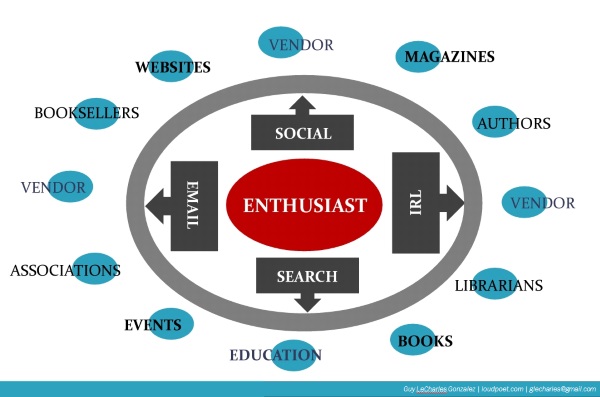If what we have isn’t valuable and no one wants to pay for it, maybe we don’t have a business.
–Jim Malkin, CEO, SourceMedia @ FOLIO: Growth Summit 2009
Having worked in almost every sector of the magazine media world over the past 25 years—consumer, enthusiast, B2B, association; profit and non-profit; private equity and privately owned; paid and controlled—the access to and analysis of data to inform decisions has always been a critical baseline for success, whether I was working in circulation (where I got my start), marketing, sales, or editorial. Bizarrely, as digital opportunities grew and publishers started drowning in more data than they could ever process, the fundamentals that drove old school disciplines like circulation and direct marketing were ignored for new shiny unicorns and bespoke metrics.
Fast forward to 2018, 10 years after the advertising collapse should have forced publishers to rethink their digital strategies and start diversifying their revenue streams to be less dependent on ad revenue, we’re finally starting to see data-informed, audience-centric strategies gain traction across the industry, from the New York Times and Harvard Business Review to Hearst Digital Media and Game Informer.
https://twitter.com/PPA_Live/status/975656123670892544
Scale vs. Depth
Big audiences are cool but deep audiences are cooler.
–Troy Young, Global President of Digital, Hearst @ Digital Innovators’ Summit 2018
Many “legacy” publishers continue to struggle with optimizing digital offerings which have long pursued scale for advertising, while managing print magazines that still drive significant—if declining—advertising, subscription, and licensing revenues.
Enthusiast media, aka niche consumer, is my favorite sector because it prioritizes depth over scale, and its KPIs are different from general consumer media’s chasing eyeballs for advertisers. Instead of being dumb pipes driven by vanity metrics and anecdata, they can build self-sustaining communities with deep engagement that offers diversified revenue streams, including valuable intersections for marketing partners seeking strategic, long-term relationships.
In its ideal form, enthusiast media (and some B2B verticals) combines community engagement, editorial integrity, and paid content into a diversified suite of relevant products and services which simultaneously minimizes its reliance on advertising while optimizing its effectiveness for savvier marketing partners.
Enthusiasts are not monolithic groups, though; within each community there are overlapping segments with unique goals and myriad channels for achieving them, including direct and indirect competitors, marketing partners, and most importantly, each other. Understanding those segments and their unique and overlapping goals is critical to developing the right content strategy and ensuring long-term success.

Data-Driven vs. Data-Informed
But the rise of consumer revenue hasn’t spawned a horde of third-party businesses the way digital advertising’s rise did with ad tech. Many publishers are still making do with tools that were built for other industries or for the ad-supported part of their business. That’s because advertising still drives their business, and subscriptions are unlikely to attract a tidal wave of venture capital that might wash up a perfect solution for publishers.
–Max Willens, DIGIDAY
Unless advertising is your sole revenue stream and you’re resigned to riding that roller coaster, pageviews and social followers are meaningless if they don’t lead to some tangible action that aligns with your business goals. For enthusiast media, online content should serve two purposes: audience engagement and email acquisition.
Too often, though, it is driven by data and the KPIs are tied to advertising revenue. It’s reactive, relies primarily on vanity metrics—maximizing uniques, pageviews, “social engagement”—and helped launch a cottage industry of short-sighted technology startups enabling variations on “What time is the Super Bowl?” and news-jacking, lazy tactics that do little to drive real engagement or brand affinity. It also inadvertently diminished advertising opportunities as ill-conceived social strategies fed Facebook invaluable audience data for free, allowing them to effectively disintermediate publishers while also making them pay for the privilege of reaching the audiences they helped bring to the platform.
Instead, online content strategy should be informed by data, supporting the development of products and services that help specific communities achieve their goals, some of which they’re willing to pay for.

A truly diversified enthusiast media company brings a community together and connects them to the information, inspiration, and resources they need to pursue their shared interests and individual goals. To support this approach, you need KPIs that prioritize metrics like new visitors via search, pages/session (not via interstitials, slide shows, or pagination tricks), email acquisition, and email open rates and CTRs.
More sophisticated KPIs might include conversions to paid subscriptions, services, or events; affiliate links to recommended products; or engagement and/or lead generation for branded content programs.
Without an Audience,
Content is a King Without a Kingdom
Some of these conversations ended in a sale, but don’t let that fool you. The sale was merely the exclamation mark at the end of the sentence.
–Markets Are Conversations, CLUETRAIN MANIFESTO (1999)
One of the most underrated aspects of “digital disruption” is the continued importance of quality content, regardless of the history of the brand producing it. Much has been made of “content marketing” but rarely is the connection made to its role in the decline of advertising revenues for traditional media as brands shifted portions of their ad budgets to owned media initiatives—for which Google and Facebook offer much cheaper ad opportunities—and effectively became quasi-publishers themselves, and in many cases, direct competitors.
Of course, for every success story (eg, American Express, Marriott, Red Bull) the internet is littered with lame and failed examples of marketers who realized launching a website or social presence and producing some content was the easy part. The hard part is finding, engaging, and nurturing an audience with that content, regardless of whether or not they’re ready to make an immediate purchase.
“If you only have a hammer, everything looks like a nail…” doesn’t just apply to hard-sell marketers who swear by last-click attribution and want to pay as little as possible for those clicks; it also fits myopic publishers with limited revenue streams and a content strategy tied to vanity metrics.
In 2018, there’s absolutely no good reason for enthusiast media (and some B2B verticals) to be anything but thriving operations, in print and digital, unless they lack the strategic vision to see the opportunity and the deep commitment to truly engaging and serving a community, with or without an advertising angle.
UPDATE: I presented a slightly updated version of this at the Future of Media and Publishing Meetup in NYC a few months after posting this. The hosts published a very thorough recap and I’ve uploaded my slides to Slideshare.
[slideshare id=120749892&doc=contentstrategyoverviewfompnyc180920-181026002410]
Photo by Paula May on Unsplash
Do you like email?
Sign up here to get my bi-weekly "newsletter" and/or receive every new blog post delivered right to your inbox. (Burner emails are fine. I get it!)

